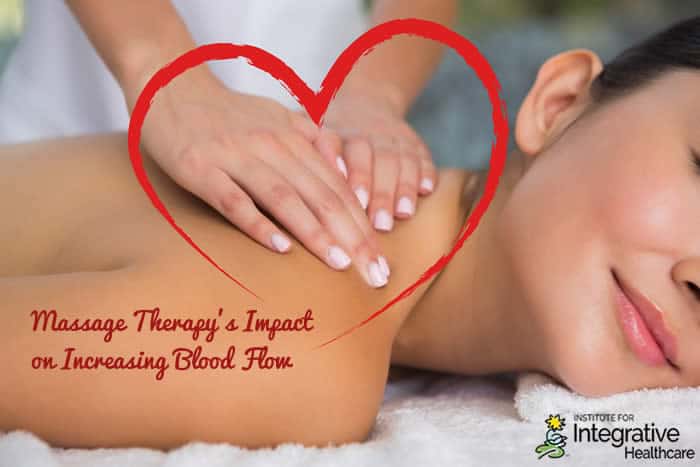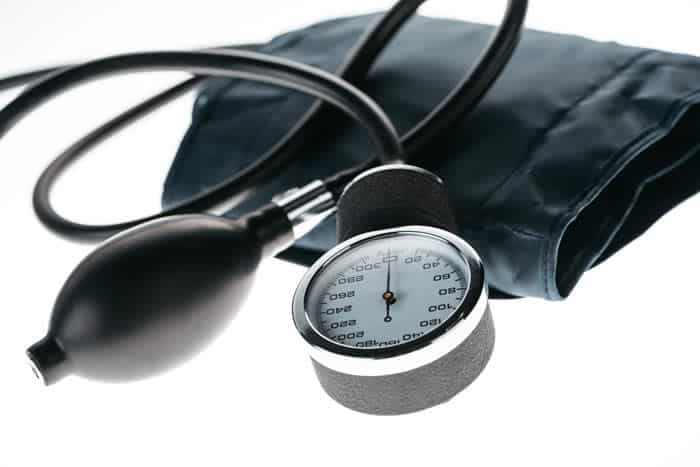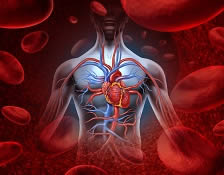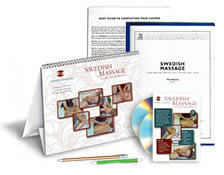

Massage therapy students generally learn that massage therapy impacts blood circulation. “Increasing blood circulation” is amongst the first benefits of massage therapy that students learn in entry level manuals. Ask a massage therapist “What are some benefits of massage?” and within the first three responses will be “Increasing blood flow.”
This article will examine massage therapy’s role in heart health which also translates into overall cardiovascular health. Blood vessel conditions, hypertension and prehypertension are examples of conditions which can be supported as massage therapy aids heart health.
Steiner Education
When I taught at Steiner Education, our massage manuals mentioned increasing circulation as a main benefit of massage therapy. I am providing this example to show what a typical massage program presents to students regarding massage therapy’s role with cardiovascular health.
According to the Swedish massage manual of Steiner Education presented in 2005, massage therapy can:
- “Cause changes in the blood” by increasing oxygen capacity 10-15% after massage therapy.
- “Increase the circulation of the blood and lymph” displaying an increase in the rate of blood flow through the body via rhythmically applied pressure and stretching.
This manual continues that “for the whole body to be healthy, the cells must be healthy. The individual cells of the body are dependent on an abundant supply of blood and lymph because these fluids supply nutrients and oxygen and carry away waste.” (1) The entry level understanding of the role of massage therapy becomes a powerful baseline for massage principles and practices amongst the vast majority of massage therapists nationwide.
Swedish Massage
There are numerous studies showing the effectiveness of massage therapy with heart related conditions, including hypertension. All these studies show the efficacy of Swedish massage, also called Classic massage.
This style of massage includes the five classic Swedish strokes:
- Effleurage
- Petrissage
- Friction
- Vibration
- Percussion
Hypertension and Prehypertension

Many articles surveyed describe hypertension and prehypertension.
- Hypertension is clinically described as systolic blood pressure at least 140 mmHG and diastolic blood pressure at least 90 mmHG.
- Prehypertension is defined as a range of systolic blood pressure between 120-139 mmHG and diastolic blood pressure between 80-89 mmHG. Prehypertension patients present considerable risk in acquiring hypertension. (2)
According to the Mayo Clinic, a blood pressure reading of below 120 mmHG systolic and below 80 mmHG indicate healthy (normal) blood pressure. A range of 120-129 mmHG systolic pressure is classified as Elevated blood pressure. Prehypertension, as described above, is classified by Mayo Clinic as Stage 1 Hypertension. (3)
Numerous Studies
The Journal of Cardiovascular Nursing published an article in 2016 on the effectiveness of massage in significantly reducing both systolic blood pressure and diastolic blood pressure as compared to control groups in patients either with hypertension or at great risk of developing this condition. (4)
The Iranian Journal of Nursing and Midwifery Research published an article in 2011 indicating how massage therapy is a safe, effective intervention for controlling blood pressure in prehypertensive women. The study showed a statistically significant improvement of mean systolic and diastolic blood pressures with the massage group compared to the control group. (5)
The Journal of Traditional Chinese Medicine published an article in 2015 showing the efficacy of Swedish massage with decreasing systolic blood pressure. For ten consecutive days, overall blood pressure values decreased within five minutes after a Swedish massage session. (6)
Last year the Journal of Human Hypertension published an article highlighting that Swedish and foot massage helps hypertension patients both reduce blood pressure and improve sleep quality. Both systolic and diastolic blood pressures were significantly improved as well as scores of the Pittsburgh Sleep Quality Index (PSQI). (7)
The numerous qualitative studies confirm that massage therapy’s role in increasing blood flow can greatly aid hypertension which corresponds to heart health. I often inform clients that they need to be cognizant of their blood pressure reading since this figure essentially dictates how long we will live.
If Our Heart or Blood Vessels Are Overworked
If our heart overworks, there will be dysfunctions arising within the heart musculature, valves, vessels or nerve supply distribution.
Examples of conditions along this vein of thought will be:
- congestive heart failure
- valve disorders
- coronary artery disease
- arrhythmia
- and cardiac arrest.
If our blood vessels overwork, there will be disruptions of circulations throughout the body.
Examples of conditions along this flow of thought will be:
- peripheral artery disease
- Raynaud’s phenomena
- deep vein thrombosis
- atherosclerosis
- and carotid artery disease.
Massage Contraindications
Generally, massage therapy is contraindicated if a client has unmanaged hypertension or other cardiovascular conditions.
It is advised for the client to seek professional advice from a medical professional to ensure they are in good enough health to receive circulatory massage, a term given to Swedish massage as this style will increase circulation of blood flow.
If a client is taking medications such as anticoagulants, beta blockers, ACE-inhibitors and many others, it is advised to avoid circulatory massage. Instead, bodywork (other than Swedish) with non-circulatory goals may be indicated. These may include Cranial Sacral Therapy, Shiatsu, Reiki, Reflexology and Polarity Therapy.
Remember That…
Remember that low blood pressure, dizziness, fatigue and drowsiness are common side effects of many cardiovascular medications. Be sure to monitor how your client feels during and after session regarding their overall feeling, especially if these side effects are amplified.
For clients taking cardiovascular medications who are receiving circulatory massage, limit the longer connective strokes that may push blood faster through the body. Be careful to not overstimulate the body with massage efforts. Shortening session time, slowing your pace of work and including more bodywork (less massage) will help ensure these measures are met.













